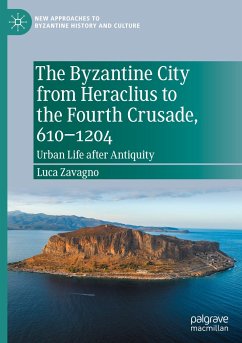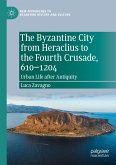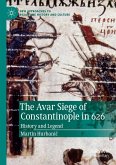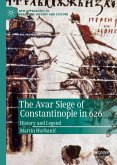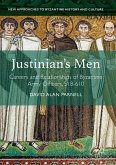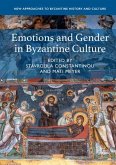This book explores the Byzantine city and the changes it went through from 610 to 1204. Throughout this period, cities were always the centers of political and social life for both secular and religious authorities, and, furthermore, the focus of the economic interests of local landowning elites.
This book therefore examines the regional and subregional trajectories in the urban function, landscape, structure and fabric of Byzantium's cities, synthesizing the most cutting-edge archaeological excavations, the results of analyses of material culture (including ceramics, coins, and seals) and a reassessment of the documentary and hagiographical sources. The transformation the Byzantine urban landscape underwent from the seventh to thirteenth centuries can afford us a better grasp of changes to the Byzantine central and provincial administrative apparatus; their fiscal machinery, military institutions, socio-economic structures and religious organization. This book will beof interest to students and researchers of the history, archaeology and architecture of Byzantium.
This book therefore examines the regional and subregional trajectories in the urban function, landscape, structure and fabric of Byzantium's cities, synthesizing the most cutting-edge archaeological excavations, the results of analyses of material culture (including ceramics, coins, and seals) and a reassessment of the documentary and hagiographical sources. The transformation the Byzantine urban landscape underwent from the seventh to thirteenth centuries can afford us a better grasp of changes to the Byzantine central and provincial administrative apparatus; their fiscal machinery, military institutions, socio-economic structures and religious organization. This book will beof interest to students and researchers of the history, archaeology and architecture of Byzantium.
"Luca Zavagno's book provides a comprehensive critical overview of the research conducted on early Byzantine urban life, as can be seen from the large bibliographies annexed to each Chapter. It is obvious that the author was able to manage a large amount of data from different regions of the Byzantine area and use them to demonstrate his approach to the problem of the continuity of urban life." (Alexandru Madgearu, Hiperboreea, hiperboreeajournal.com, February 22, 2023)
"This handy book covers the age-old debate about the definition of cities (and towns) and how historians and archaeologists have variously interpreted pertinent textual and material remains. ... Zavagno is without doubt a scholar to read by anyone interested in both Byzantine studies and, more generally, in early medieval urbanism. ... this book is necessary reading for its sweeping overview, the author's thoughts and its wealth of references." (Paul Arthur, Medieval Archaeology, June 13, 2022)
"This handy book covers the age-old debate about the definition of cities (and towns) and how historians and archaeologists have variously interpreted pertinent textual and material remains. ... Zavagno is without doubt a scholar to read by anyone interested in both Byzantine studies and, more generally, in early medieval urbanism. ... this book is necessary reading for its sweeping overview, the author's thoughts and its wealth of references." (Paul Arthur, Medieval Archaeology, June 13, 2022)

